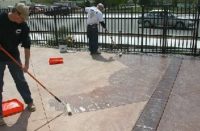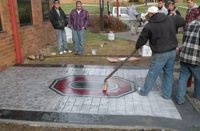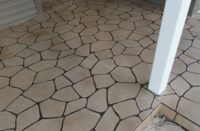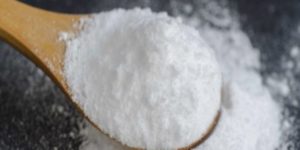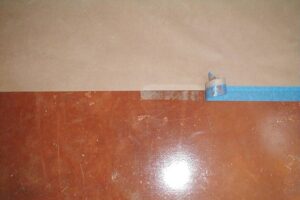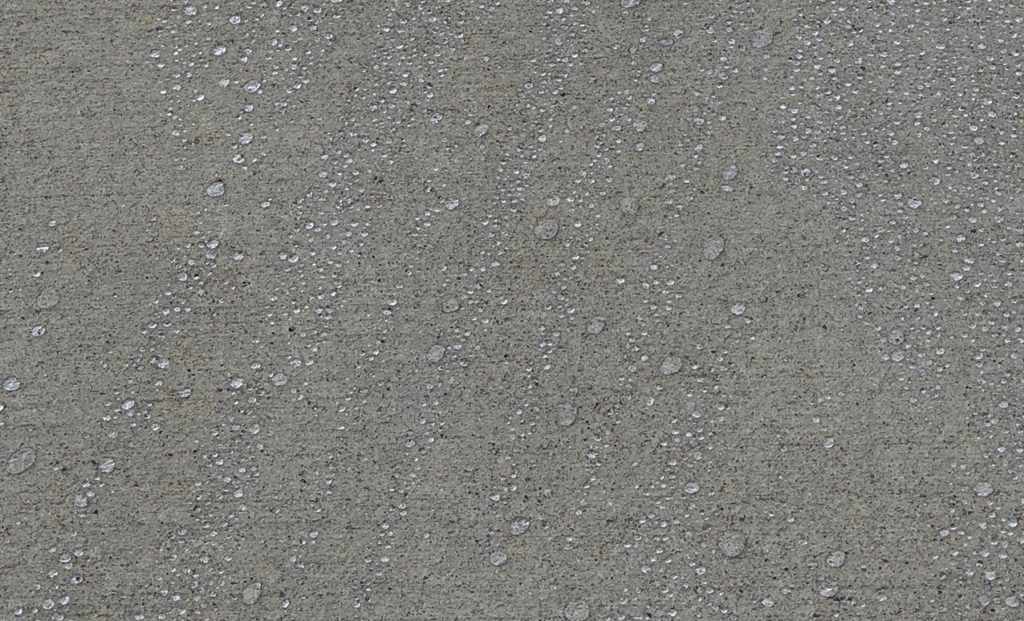
Across the country, there’s a trend afoot when it comes to what people are seeking for their outdoor projects. “They want a natural look that delivers penetrating protection,” says Chris Sullivan, decorative concrete specialist for the American Society of Concrete Contractors. He is also the former vice president of sales and marketing for ChemSystems Inc. based in Houston, Texas.
“They’re moving away from what I call the ‘glazed doughnut’ look. Now they are moving toward more natural-looking sealers that don’t produce a film but do provide good protection,” he adds. “Some enhance the surface; some don’t. The main thing is there’s no gloss.”
The other area that’s growing in the sealer category is water-based products which typically have little to no odor or VOCs and aren’t a flammability hazard. “And if regulations continue to tighten, I think we’ll see more development in water-based technology.”
The whole push for us to reduce our carbon footprint by offering more low-maintenance, environmentally friendly products is causing many manufacturers to step up their game. Many agree this is a good thing for the construction industry.
Demand is widespread
The areas of the country where more and more contractors are switching over to water-based sealers include California and states in the Northeast, says Rich Sanders, general manager for Clemons Concrete Coatings in Nashville, Tennessee. “They’re mainly doing this because they have to,” he says, “but also because they work well.”
Beyond the U.S. mainland, other areas are clamoring for water-based products, says Mark Hampston, CEO of Redi-Mix Colors, a company that specializes in stains and is a reseller of Ghostshield products. Business is going gangbusters in Hawaii due to that state’s strict low-VOC regulation, he says. “And we also just finished setting up distribution in Malaysia. The demand reaches well beyond the contiguous 48.”
The performance gap between solvent and water-based penetrating sealers is much smaller than it used to be, Sanders says. He continues, say that changes are positive when switching over. “Water-based sealers are easier on the equipment and you just need plain water to clean up,” he notes. Plus, you can apply the product with very economical plastic sprayers.
Why water-based stains
This ease of application makes water-based stains the go-to product for many, says Benjamin Moore, principal and CEO of Ghostshield in Hudson, New Hampshire. “Simply pour the sealer into a low-pressure pump sprayer and apply,” he says. “You don’t have to worry about lap lines, roller marks, over-application or the material flashing off too quickly.”
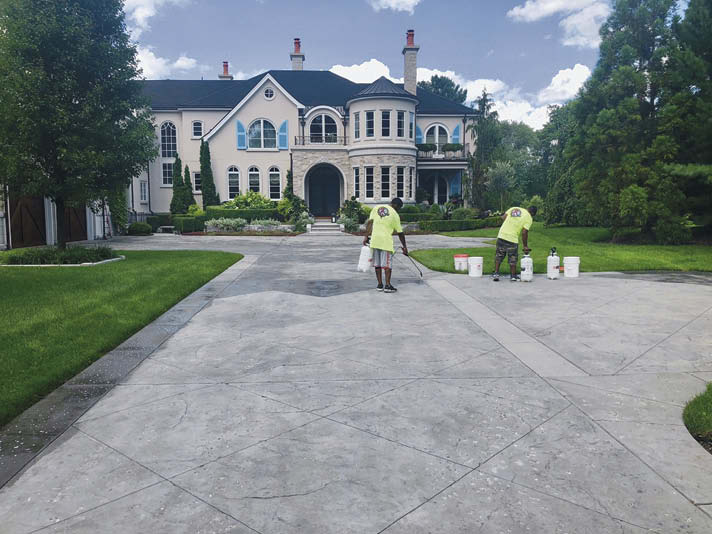
In general when applying water-based penetrating sealers, Moore continues, apply two coats, applying the second coat while the first coat is still damp. “This application method increases the sealer’s time of contact on the surface and ensures optimal permeation.”
“The key to a good application is to apply the product to the saturation point but you don’t want it to puddle,” says Clemons’ Sanders.
Penetrating sealers are very thin and readily soak in so it’s hard to decipher how much you should use to achieve full coverage, says Chris Becker, director of technical services for Solomon Colors/Brickform based in Springfield, Illinois. He encourages contractors to become familiar with a chosen product’s characteristics so they know when they have enough on.
“You need to understand what the product does and doesn’t do,” he says, and pass on this information to your customers.
Common types
Penetrating water-based sealers are most commonly derived from silanes, a silane/siloxane blend or siliconates, says Moore. The molecules in each function a little differently, he says. Silanes are very small molecules (0.3 to 1.5 nanometers) and work very well for concrete substrates. However, because of their volatility (high evaporation rate) generous application amounts are typically necessary.
Siloxanes are similar to silanes. At the low end are almost as small (2 nm). As they get larger (up to 30 nm) their molecular structure gets more complex. This prevents them from penetrating as deep, Moore says. Siloxanes are less volatile than silanes and ideal for more porous substrates. However, a high concentration can often darken concrete.
Siliconates are the smallest of the three (0.3 to 0.6 nm) but due to their chemical makeup they don’t penetrate as well into concrete. They are blended on their own, Moore says, as they’re not compatible with silanes or siloxanes.
“Silanes, siloxanes and the blends play important roles as there are different porosities in concrete,” Moore explains. “It’s nice to have a mixture of smaller and larger molecules to essentially plug all the holes.”
Sanders says his company’s silane/siloxane blend, Super Seal M, has had great reception by contractors. “It gets into the concrete and protects against freeze-thaw, de-icing and salt damage — and that’s huge.”
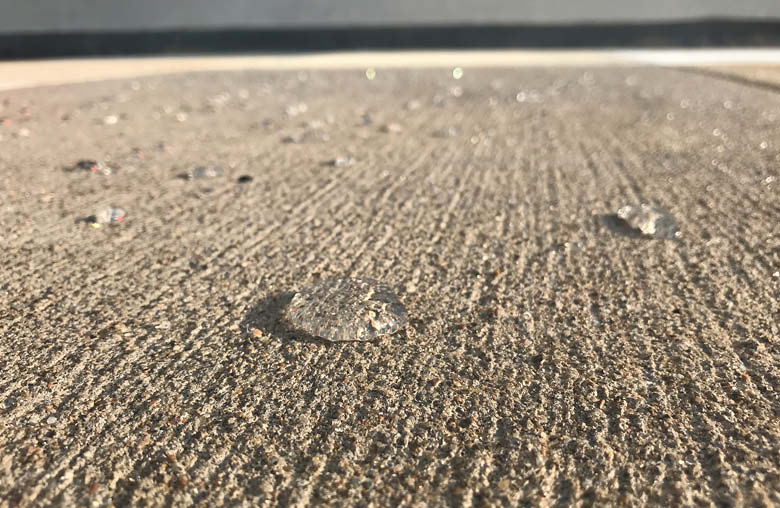
Most penetrating sealers change the surface tension of the substrate and are hydrophobic. This means they repel water and protect against water-soluble material — such as salt, chloride, sulfates and other corrosive material. Clemons’ newest penetrating water-based sealer, Super Seal M+, also has oleophobic qualities to protect against oil and chemical stain.
When sealer meets sealer
Most water-based penetrating sealers don’t change the appearance of the concrete, an attribute often cited by people who are turned off by the shiny, plastic look of most topical sealers and their slipperiness factors. But if they later decide they want the extra protection afforded by a film-forming sealer, it can be applied to the surface with minimal surface prep, Moore says.
Some manufacturers are adding a small amount of acrylic to their penetrating blends. This helps with color enhancement while remaining in the category of penetrating sealers, says Solomon Colors’ Becker.
“The acrylics that have been a mainstay for 30 years are no longer as attractive to people considering the maintenance involved to keep them looking good,” he says. Unlike film-forming sealers you must reapply every few years, “Penetrating sealers don’t create a surface that will flake off or become compromised visually.”
One disadvantage of applying a penetrating sealer to an existing slab is really more of a challenge, Becker says. “To be effective, a penetrating sealer needs to be applied to a surface that doesn’t have a curing compound or sealer on it.”
If a curing compound was used on the surface and it hasn’t completely dissipated or if it had been previously sealed with a film-forming product, the surface must be stripped, power washed or lightly etched to remove all residue before the penetrating sealer can be applied.
www.ccc-usa.com
www.chemsystemsinc.net
www.ghostshield.com
www.redimixcolors.com
www.solomoncolors.com
Questions from Readers
Question
I need a product that works with water based stain that beads water and is not glossy or change concrete surface.
Answer from Concrete Decor
If your project is exterior, the product you are looking for is a penetrating water-based sealer.
This sealer is not film forming and will not change the color of the existing concrete surface. If you know your square footage I can prepare a quote for the material I referenced above.
